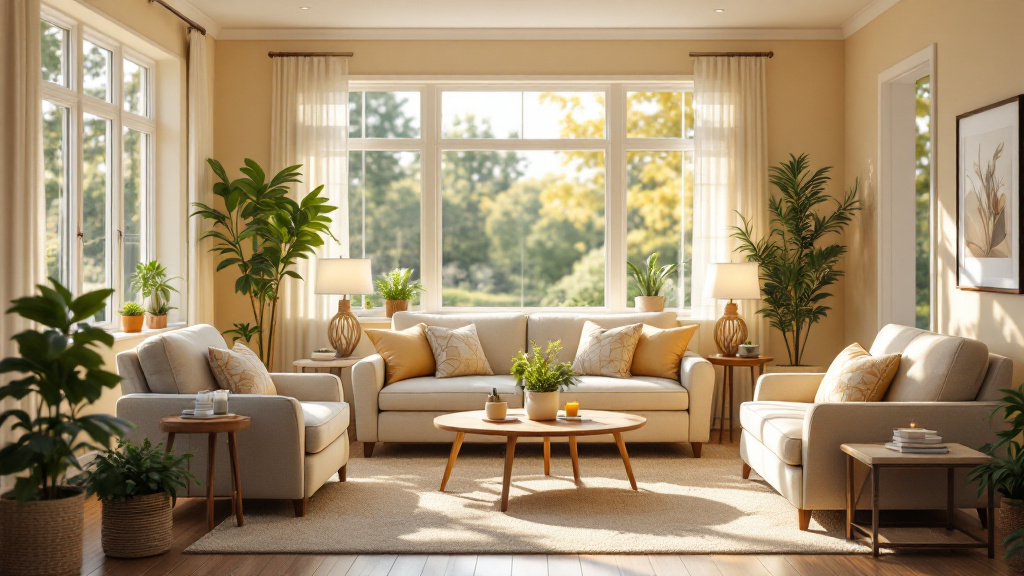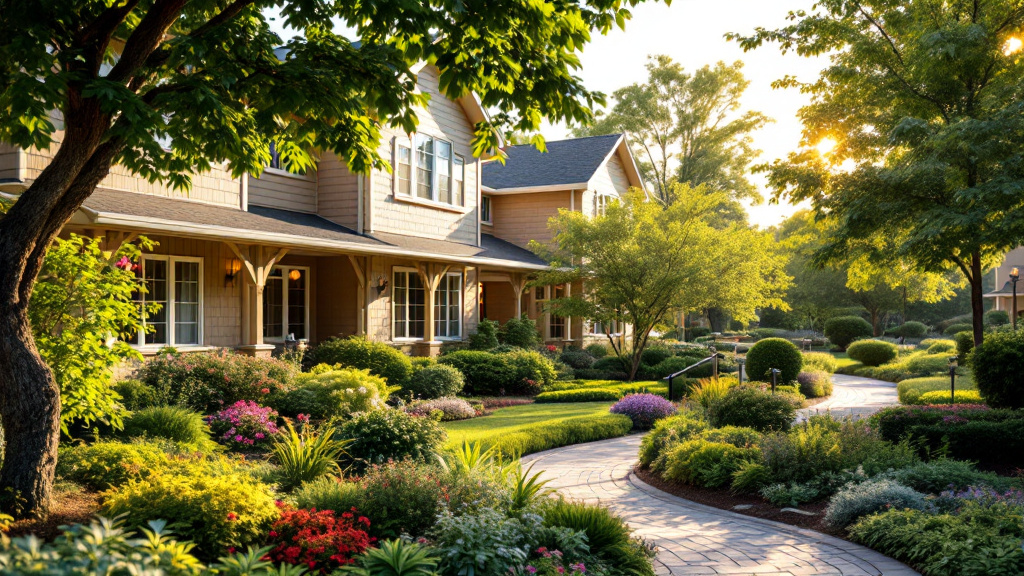The Benefits of Outdoor Spaces in Senior Living Facilities

The Vital Role of Outdoor Settings in Enhancing Senior Life
In senior living facilities, the presence of well-designed outdoor spaces offers a transformative impact on the well-being of residents. These green havens are not merely aesthetic enhancements; they are crucial elements that support physical health, social interaction, and mental wellness, contributing significantly to the quality of senior life.
The Holistic Benefits of Outdoor Spaces

What are the advantages of outdoor spaces in senior living facilities?
Outdoor spaces in senior living facilities offer numerous benefits that enhance the quality of life for residents. They play a crucial role in promoting physical activity, essential for maintaining mobility and overall cardiovascular health. Activities such as walking, gardening, or gentle exercises stimulate muscle strength and flexibility, which help reduce fall risks.
Access to nature is another significant advantage. Regular exposure to sunlight and fresh air can improve mood and alleviate symptoms of stress and anxiety. Spending time outdoors has been correlated with enhanced cognitive functions, including memory and creativity. For seniors, these cognitive benefits are vital in combating conditions like Seasonal Affective Disorder, which can be more prevalent during the colder months.
Moreover, well-designed outdoor environments foster social engagement. They create natural opportunities for residents to interact, which helps reduce feelings of loneliness, especially since about 28% of seniors live alone. Designed pathways and communal spaces encourage gatherings and social activities, promoting emotional health and a sense of belonging within the community.
In summary, outdoor spaces not only improve physical health but also uplift mood and encourage social connections, fundamentally supporting the well-being of seniors in these facilities.
Enhancing Well-being Through Nature

How do outdoor spaces contribute to the physical and mental well-being of seniors?
Outdoor spaces significantly contribute to the physical and mental well-being of seniors by creating a stimulating environment for various activities. Promoting Physical Health:
- Engagement in activities like walking and gardening enhances fitness, boosts cardiovascular health, and strengthens muscles.
- Access to sunlight aids in vitamin D production, essential for bone health and immune function.
- The fresh air in green spaces promotes respiratory health by lowering the risk of conditions like asthma and COPD.
Moreover, outdoor spaces are designed with features that encourage mobility, such as well-lit pathways and seating options, which are crucial for seniors, particularly those with mobility challenges.
Encouraging Mental Wellness:
- Spending time in nature elevates mood and reduces stress levels, as exposure to natural light stimulates serotonin production.
- Engaging with plants and social settings in outdoor spaces fosters a strong sense of community and connection, combating feelings of loneliness, especially among those living in assisted facilities.
- Regular access to green areas enhances cognitive functions, memory retention, and even gives residents a purpose through engaging activities like gardening.
Overall, outdoor spaces not only foster physical activity but also significantly enhance mental clarity and emotional stability, making them vital to the well-being of seniors.
Fostering Social Connections in Outdoor Settings

How do outdoor spaces in senior facilities facilitate social engagement?
Outdoor spaces in senior living facilities play a pivotal role in encouraging social engagement. They provide safe, vibrant environments where residents can actively participate in physical activities, such as walking, gardening, and relaxing. These well-maintained areas, often designed with accessibility in mind, allow seniors to interact and connect with one another while benefiting from the fresh air and natural surroundings.
Greenery and communal garden spaces serve as gathering spots for residents, fostering a sense of community. Whether it’s through organized events or casual meet-ups, outdoor areas facilitate the development of friendships, which is vital for seniors who may face loneliness. Features like comfort-enhancing seating arrangements and pleasant pathways encourage open communication and trust among residents, enhancing their social experiences.
Moreover, incorporating biophilic design—integrating natural elements—into outdoor spaces creates a soothing atmosphere that supports mental health and emotional well-being. Colorful plant selections and sensory gardens stimulate the senses, enhancing cognitive engagement and reducing feelings of isolation. By nurturing these social connections, outdoor environments contribute significantly to the overall happiness and health of seniors, underscoring their importance in the design of senior living communities.
Designing for Accessibility and Engagement

What design considerations are essential for outdoor areas in senior living settings?
Creating effective outdoor areas in senior living communities is crucial for enhancing resident well-being. The design must prioritize accessibility, ensuring pathways are at least 48 inches wide and include proper lighting and handrails. This facilitates safe movement for seniors with mobility challenges.
Comfortable seating is another important aspect. It should feature appropriate height and support, promoting social interaction among residents. Providing shaded areas and integrating natural elements can offer relief from weather extremes and contribute positively to emotional well-being.
Moreover, landscaping should include diverse spaces that cater to both relaxation and activity. For example, areas for gardening or dining outdoors not only encourage engagement but also offer therapeutic benefits. Designing these spaces requires understanding the unique needs of different generations, ensuring they reflect cultural relevance and provide year-round usability.
In summary, an effective layout that seamlessly connects indoor and outdoor environments encourages interaction with nature, which can significantly enhance both mental and physical health, thereby improving longevity and quality of life for seniors.
Gardening and Walking: Simple Activities with Profound Impacts

Why might activities like gardening and walking be beneficial for seniors in outdoor settings?
Activities like gardening and walking offer numerous benefits for seniors. These pursuits not only promote physical health but also improve mental well-being.
Gardening Benefits
- Enhanced Physical Strength: Engaging in gardening helps seniors build muscle strength and flexibility, essential for maintaining balance and preventing falls.
- Cognitive Stimulation: Gardening fosters a sense of purpose and ownership, which can stimulate cognitive function and assist those experiencing cognitive decline.
- Social Connection: Community gardening initiatives create opportunities for interaction among residents, fighting feelings of loneliness and enhancing social bonds.
- Mental Wellness: The act of nurturing plants can alleviate symptoms of depression, thanks to the sensory experiences and connection to nature.
Walking for Health
- Cardiovascular Health: Regular walking enhances the cardiovascular system, lowering the risk of heart disease and supporting overall mobility.
- Stress Relief: Just 20 minutes of walking in a natural setting can significantly lower stress hormone levels, improving mood and promoting relaxation.
- Cognitive Function: Walking has been shown to improve memory retention and concentration, crucial for seniors, especially those facing cognitive challenges.
- Enhanced Mobility: Outdoor walking trails allow seniors to engage in physical activity, which supports mobility, coordination, and flexibility.
Overall, incorporating gardening and walking into the daily routines of seniors living in outdoor settings not only boosts their physical health but also enriches their emotional and social well-being.
Creating Vibrant and Healthy Senior Communities
Outdoor spaces are more than just beautiful additions to senior living facilities; they are vital components that contribute to the holistic health and happiness of residents. By fostering both individual well-being and collective social engagement through thoughtful design and accessible features, these spaces ensure that seniors can enjoy an enriched quality of life, surrounded by nature. The positive effects of spending time outdoors—ranging from improved physical health to enhanced social bonds—underscore the importance of integrating these green environments into senior living strategies. As we continue to prioritize wellness and community among aging populations, creating vibrant outdoor settings remains a key element in crafting forward-thinking and supportive environments for seniors.
References
- The Importance of Outdoor Spaces in Senior Living - Someren Glen
- The Role of Nature: Outdoor Spaces in Assisted Living Communities
- The Benefits of Outdoor Spaces for the Elderly | Chicago Botanic ...
- Exploring the Benefits of Nature and Green Spaces for Seniors
- Outdoor Programs & Adventures | Senior Living Residences
- The 5 Reasons Why Green Spaces Matter In Your Senior Living ...
- The Importance Of Outdoor Spaces In Your Retirement Homes
- Unleashing the Health Benefits of Outdoor Activities for Seniors









































.jpg)








.jpg)




.jpg)
.jpg)
.jpg)
.jpg)
.jpg)
.jpg)
.jpg)
.jpg)



.jpg)

.jpg)
.jpg)
.jpg)
.jpg)


.jpg)
.jpg)
.jpg)
.jpg)

.jpg)
.jpg)
.jpg)


.jpg)
.jpg)










.jpg)
